
| Dark Pencil-blue (formerly known as Candalides consimilis) CANDALIDINI, POLYOMMATINAE, LYCAENIDAE, PAPILIONOIDEA | (donherbisonevans@yahoo.com) and Stella Crossley |
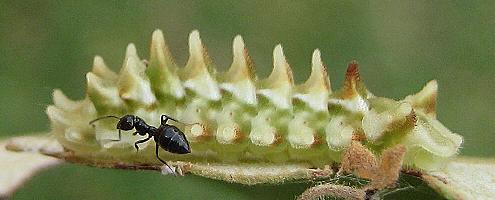
larva with attendant ant
(Photo: courtesy of Wes Jenkinson)

| Dark Pencil-blue (formerly known as Candalides consimilis) CANDALIDINI, POLYOMMATINAE, LYCAENIDAE, PAPILIONOIDEA | (donherbisonevans@yahoo.com) and Stella Crossley |

larva with attendant ant
(Photo: courtesy of Wes Jenkinson)
These Caterpillars can be nearly any colour: pink, orange, yellow, or green, and have variable markings. They have a brown head and a knobbly body, and are covered in fine hair. They feed on the flowers of various plants, for example:-
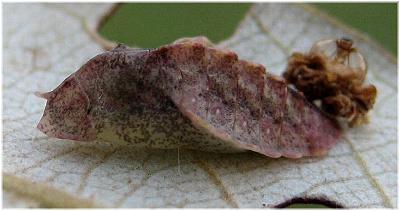
They pupate in a sheltered spot, often in a dead curled leaf. The pupa is brown with variable brown markings, and has a length of about 1.3 cms. When disturbed, it squeaks.
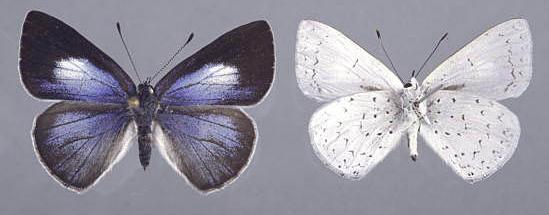
The female adults are brown on top, and the males mauve with brown margins. Both have two black spots by the tornus of each hind wing, and no tail. The underside of each wing is pale fawn with white markings. The underside of each hind wing has the two black spots near the tornus. The butterflies have a wing span of about 3 cms.
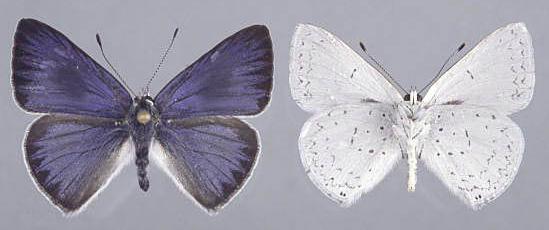
The eggs are pale green, round, and flattened, and covered in a white polygonal net. The eggs have a diameter of about 0.7 mm. They are laid singly on flower buds or young shoots of a foodplant.
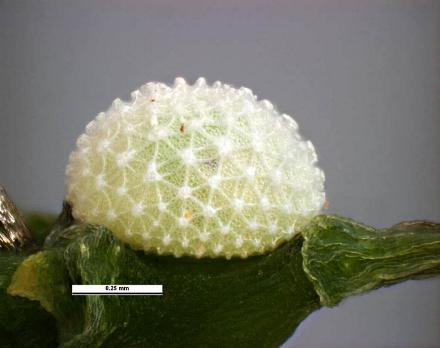
The species occurs down the whole of the east coast of mainland Australia as three races:

Further reading :
Michael F. Braby,
Butterflies of Australia,
CSIRO Publishing, Melbourne 2000, vol. 2, pp. 760-761.
John Foxton Ross Kerr,
New records of Lycaenidae (Lepidoptera) in Australia and a description of a new subspecies,
Journal of the Australian Entomological Society,
Volume 6 (1967), p. 49.
Norman B. Tindale,
A new species of Holochila (Rhopalocera, Family Lycaenidae)
from Victoria and southern New South Wales,
Records of the South Australian Museum (Adelaide),
Volume 15, Part 1 (1965), pp. 166-169, and also
Plate 14, Figs. 1-6a.
Gustavus Athol Waterhouse,
Notes on Australian Butterflies in the Australian Museum No. 2,
Records of the Australian Museum,
Volume 21 (1942), Figure 1e (p. 123), p. 124.
 caterpillar |  butterflies |  Lepidoptera |  moths |  caterpillar |
(updated 25 December 2009, 30 October 2013, 12 March 2015, 5 July 2020, 5 September 2021)